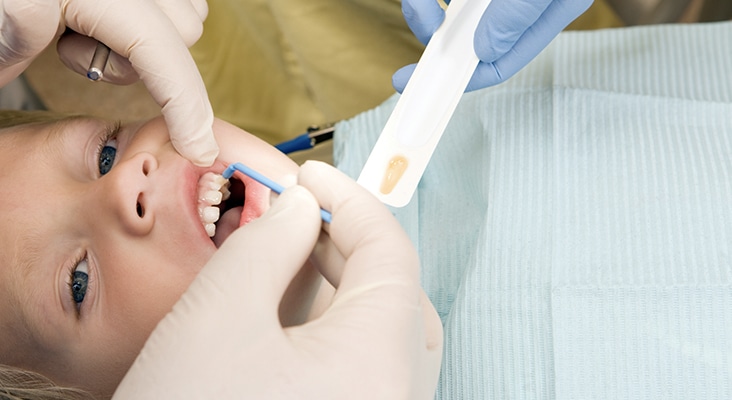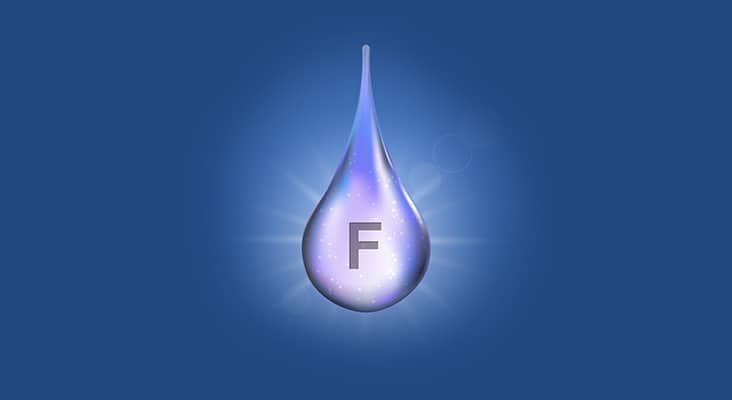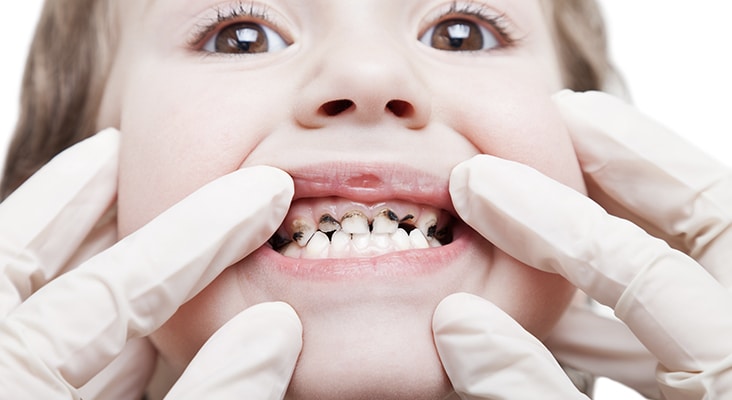Reduce Caries With Professionally Applied Fluoride
Professional topical fluorides are an essential component of individualized treatment plans.

Professional topical fluorides are an essential component of individualized treatment plans. In 2013, the American Dental Association (ADA) Council on Scientific Affairs published an executive summary that provided updated clinical recommendations for the evidence-based use of topical fluorides. In short, the summary supports the use of 2.26% fluoride varnish for patients younger than 6, and 2.26% fluoride varnish or 1.23% acidulated phosphate fluoride (APF) gel for patients older than 6 at least every 3 months to 6 months.
Photo Credit: BanksPhotos / iStock / Getty Images Plus
Acidulated Phosphate Fluoride
Acidulated phosphate fluoride (APF) 1.23% contains 12,300 ppm of fluoride ion, and comes in a foam and gel. However, the 2013 ADA Council on Scientific Affairs chairside recommendations advise against the use of 1.23% (APF) foam, as research has not demonstrated its efficacy for caries prevention. Benefits of using APF gel include storage, stability, acceptable taste, and tissue biocompatibility. Fluoride gels have been shown to reduce decayed, missing and filled tooth surfaces by 28% to 38%.
Photo Credit: bortonia / iDigitalVision Vectors

Gel Application
Applying an APF gel in a tray is safe and effective when used correctly. Patients should be seated upright to ensure minimal swallowing and an appropriate-sized tray should be used. Once the tray is loaded with fluoride and inserted, suction should be applied. Post-procedure, patients should be directed to avoid eating or drinking for 30 minutes because rinsing with water or cleaning the teeth immediately after the APF fluoride application reduces its ability to elevate plaque pH9 and decreases fluoride uptake. In addition, APF should be left in contact with the tooth for 4 minutes. Although most products still promote a 1-minute application process, most research supports a 4-minute application time. For children younger than 6, fluoride varnish is preferred over gel because it reduces the risk of excessive fluoride ingestion.
Photo Credit: BakiBG / iStock / Getty Images Plus

Neutral Sodium Fluoride
Neutral sodium fluoride (NaF) 2.0% gel or foam was not included in the ADA Council on Scientific Affairs’ guidelines for caries prevention, but it is still available for professionally applied topical fluoride use. The gel or foam is available in a variety of flavors and has a pH of 7.0. A 2.0% sodium fluoride gel or foam contains 9,050 ppm of fluoride ion. Like APF, neutral sodium fluoride has good bioavailability, and acceptable taste. In contrast to APF, neutral sodium formulations are nonacidulated, so they do not cause roughening or pitting of restorative materials. The application method for NaF 2.0% gel mirrors the one outlined above for APF gels.
Photo Credit: grebeshkovmaxim / iStock / Getty Images Plus

Varnish Offers High Patient Acceptance
The delivery model of fluoride varnish enables the fluoride to have extended contact with the tooth. This reduces the risk of ingestion and prolongs contact time while decreasing the amount of product used in comparison to other treatments. For example, a fluoride varnish application uses approximately 7 mg compared with 30 mg of APF gel. Also, there is little evidence of adverse effects and patient nonacceptance.
Photo Credit: AlfaOlga / iStock / Getty Images Plus

Silver Diamine Fluoride
Silver diamine fluoride (SDF) is a combination of sodium fluoride and silver nitrate. Silver nitrate has long been known as an effective antimicrobial agent and sodium fluoride has been used to reduce the incidence of dental caries. SDF has the ability to both arrest and prevent caries due to silver nitrate’s potent germicidal effect and fluoride’s ability to reduce decay. It is available in liquid form in a concentration of 38.3% to 43.2%.
Photo Credit: maroke / iStock / Getty Images Plus

Downside of Silver Diamine Fluoride Use
A major disadvantage of SDF is that it causes dark staining of demineralized tooth surfaces, which can deter its acceptance. SDF is known to discolor areas of the tooth that are unsound or not intact. It is estimated that 40% to 90% of carious lesions can be arrested with a single application of SDF. Because single applications are not always adequate in arresting caries, SDF may need to be applied annually or every 6 months if areas are not restored. Practitioners should practice informed consent and explain potential side effects, and the need for follow-up to patients and caregivers.

